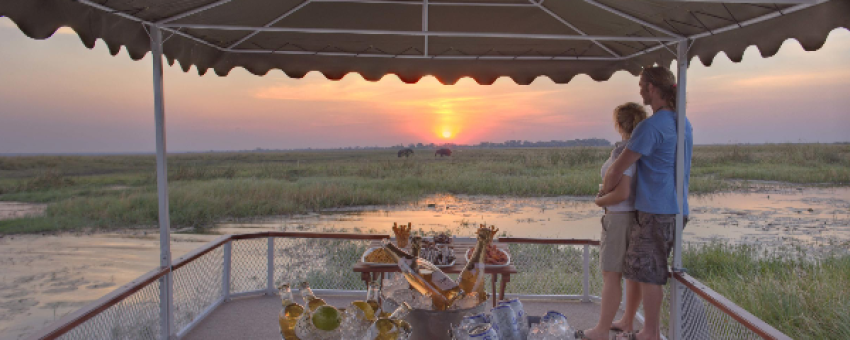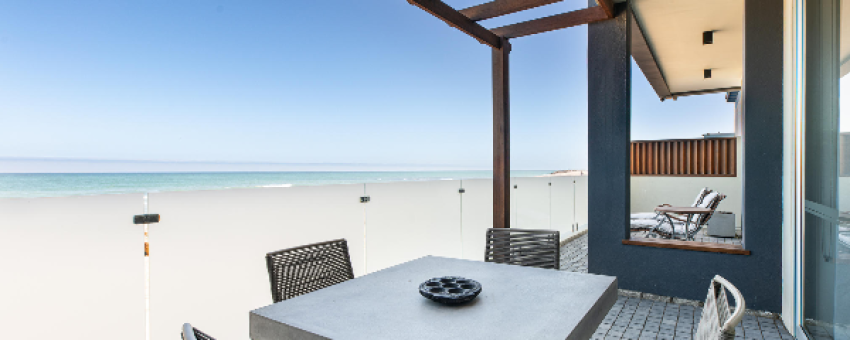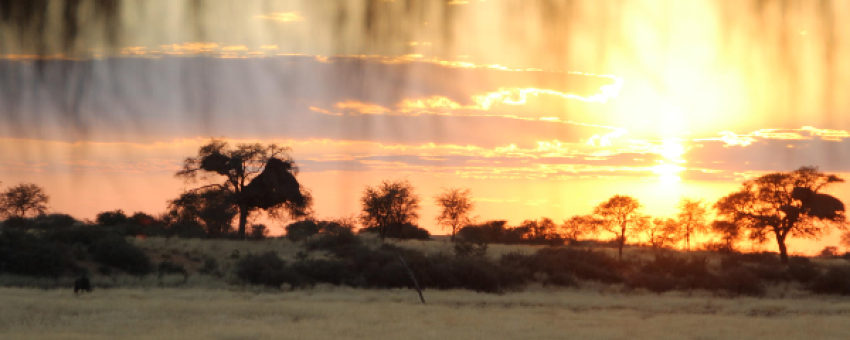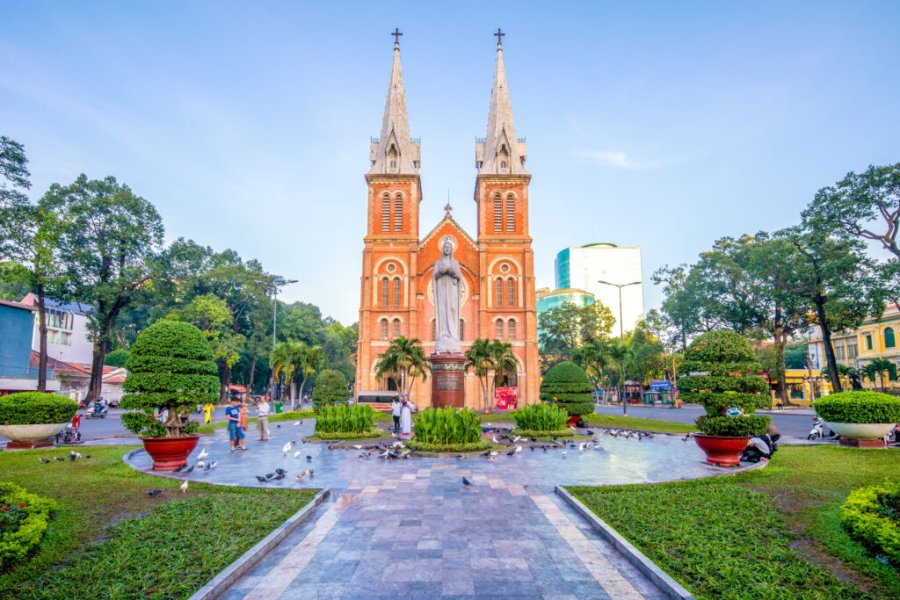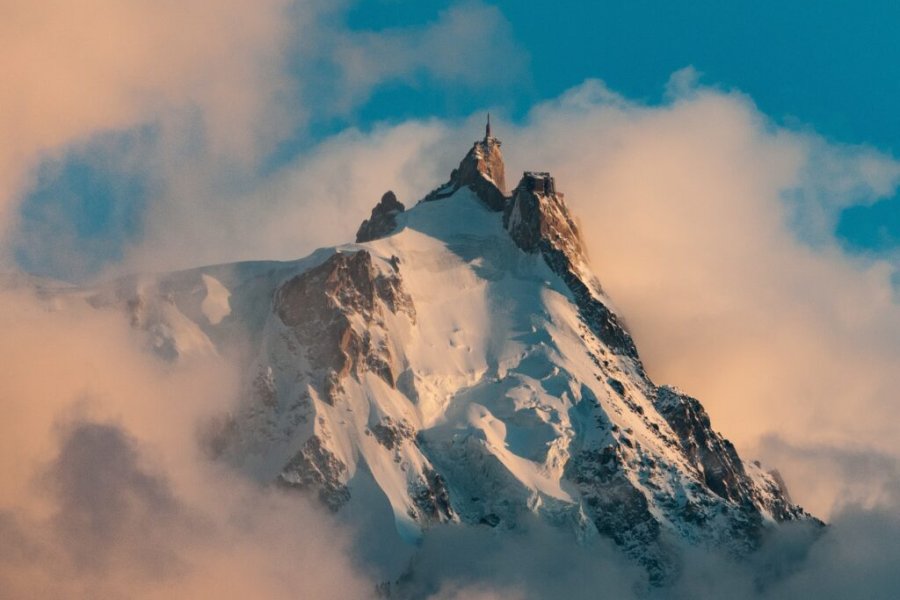Proposition-19-day rental car trip in Namibia from Windhoek to Victotia Falls
Highlights and description
- High-level self-guided tour, including 4x4 rental car
- Itinerary adaptable to your wishes
- One-way tour
- Kalahari and Sossusvlei
- Swakopmund and Palmwag Conservancy
- Etosha National Park
- Caprivi Strip and Chobe National Park
- Victoria Falls
Highlights of the trip
During your stay you can enjoy the following highlights: Faune and flora, Discovery, Nature travel, Road trip and autotour.
Best months to go
The best time(s) to go is/are : Janvier, Février, Mars, Avril, Mai, Juin, Juillet, Août, Septembre, Octobre, Novembre, Décembre.
You can go all year round.
How to get there?
You can get there by Plane.
AFRICAN ELEGANCE SAFARIS
From 4777€ / person
Travel suitable for :
Detail of the stay : Proposition-19-day rental car trip in Namibia from Windhoek to Victotia Falls - 19 days
JOUR 1: KALAHARI NAMIBIA

Steps: Mariental
When you land at Windhoek International Airport, an African Dreamtravel employee will be waiting to transfer you to Windhoek. You can also exchange your currency directly at the airport.
Once you've picked up your rental car, you'll be given comprehensive information about your itinerary and, of course, the contact details of your assistant, who will be at your disposal during the journey. A short stop at the food store later, and you're on your way south to the Kalahari Desert.
After a journey of around 3-4 hours, your first stop in Namibia awaits you. The lodge is beautifully positioned amidst the red dunes of the Kalahari. The bright azure sky contrasts beautifully with the red dunes, leaving you full of enthusiasm.
JOUR 2: KALAHARI NAMIBIA

Steps: Mariental
Another day in the Kalahari is an ideal opportunity to continue exploring this unique environment.
There are plenty of exciting diversions to book, including an electric bike ride, an outdoor excursion or a self-guided walk. With the help of the expert guides present, you'll already be able to see the wild animals for the first time.
Evening trips almost always end with the famous Namibian Sundowner with a breathtaking sunset, morning trips end with a hot coffee in the dunes with the fresh morning air.
Enjoy your time in the Kalahari.
DAY 3: SOSSUSVLEI
Steps: Sesriem - Dunes De Sossusvlei
Today, we enter the heart of the world's oldest desert, the famous Namib. Discover the steep passes that lead from the Namibian highlands to the low plains of the Namib Desert...
Today, we travel to the Sesriem/Sossusvlei region via the spectacular Tsarisberg Pass.
Along the way, the dreamy landscapes of the Namib rim give us a glimpse of what's to come in the next few days.
Your accommodation for the next two nights is near Sesriem. Enjoy the picturesque desert landscape. As an option, you can take part in a nature tour to admire this unique environment in the play of light and shadow of sunset. End the evening with a delicious meal.
DAY 4: SOSSUSVLEI
Steps: Sesriem - Dunes De Sossusvlei
The national park gates open at sunrise. Drive early to the park entrance and visit the fascinating dune landscape of Namib Naukluft Park. Inside the park, you can park your vehicle and walk to the immense shifting dunes of Sossusvlei. You can also take advantage of a 4x4 transfer. Climb one of the dunes up to 300 meters high, as the sweaty climb is rewarded with a breathtaking view over the sea of dunes. Next, we head for Sesriem Canyon, which sometimes receives water from the Tsauchab River and can be traversed in dry periods. After a varied exploration, you leave the park in the afternoon for your accommodation.
You can undertake this desert day trip on your own and even drive a little deep sand with the 4 × 4.
Alternatively, you can book this excursion with a professional guide to discover the little secrets of the Sossusvleis. We're happy to book a guided tour as an option.
JOUR 5: SWAKOPMUND

Steps: Swakopmund
After a delicious breakfast, we head north. A break at the Solitaire bakery is necessary on the way. Later, we reach the coastal town of Swakopmund. This town is still inhabited by descendants of the settlers and civil servants of the German colonial era. Pastries, architecture and the German language, still spoken by some, are reminders of the past. Swakopmund is the starting point for many adventure activities. Take a cruise near Walvis Bay or a desert safari to discover the desert critters.
In the vicinity of Swakopmund (and the town of Walvis Bay, 30 km to the south), there are many activities on offer, including boat tours with a seal whisperer, exciting desert excursions (The desert is alive!), quad bike safaris, kayak tours and much more.
Bookable excursions :
- Catamaran Charters
- Historian Dune Tour
- Kajak Eco Marine Tour
- Living Desert Tour
- Panoramic flights over the Namib:
- Sandwich Harbour 4x4
JOUR 6: SWAKOPMUND

Steps: Swakopmund
Unlike the desert, it'll be a little cooler at your next destination, because in Swakopmund, arguably Namibia's most German town, you'll be able to enjoy the cool sea breeze over the Atlantic.
Always take a jacket with you on excursions.
Restaurant recommendation Swakopmund:
- Ocean Cellars @ Strandhotel
- The TUG
- Old Steamers im Alte Brücke Resort
- Brauhaus
- Altstadtrestaurant
DAY 7: PALMWAG

Steps: Palmwag
Today, we say goodbye to the sea and continue on to Damaraland!
Damaraland is part of the Kunen region in north-western Namibia, between the Brandberg and the village of Sesfontein. Damaraland is characterized by a rugged, rocky landscape of harsh, haunting beauty.
The region is home to many people of the Damara language group, hence the former name "Damaraland", which today is only used in tourism as a geographical delimitation and is therefore also used on this website.
Places of interest in Damaraland
- Brandberg
- Damara Living Museum
- Khorixas
- Twyfelfontein
- Petrified forest
- Vingerklip
DAY 8: PALMWAG

Steps: Palmwag
You can also book activities at the lodge. Prices on request.
You can choose from
- Guided morning hike (5km)
- Morning/afternoon nature excursion (guided)
- Damaraland Nature Day Tour
- Guided morning hike (2km)
- Half-day rhino tracking (guided)
- Under Canvas Sleep-out (in advance)
DAY 9: ETOSHA SOUTH

Today, you're off to the wildlife kingdom of Etosha National Park, another highlight of your trip to Namibia. You'll be staying outside the national park.
En route, you can do your shopping in the small village of Outjo, at the Spar supermarket. Outjo also has a good bakery and gas stations. We recommend using the new Etosha Trading Post service station at the southern entrance to the park.
In the national park, petrol and diesel are often out of stock. This is a good place to fill up, especially for vehicles without double tanks.
The park is one of the world's great game reserves and is considered one of Africa's most outstanding wildlife parks.
Etosha National Park was founded in 1907 and is one of the most attractive national parks in southern Africa. In the afternoon, you're already exploring the park and, with a bit of luck, regularly encountering big game. Along the way, you'll stop at the indicated watering holes.
Indication if you wish to stay in the park:
JOUR 10: ETOSHA EAST

Today you cross Etosha from south to east. Along the way, you return to the many waterholes along the way to observe the animals.
Today, you leave the park through the Von Lindquist Gate to reach the Mushara Game Reserve and your accommodation.
JOUR 11: RUNDU

Steps: Rundu
Today, you'll travel via Tsumeb and Grootfontein to Caprivi Point and Rundu. Today, it's known as the Zambezi Strip.
The Caprivizipfel is a rainy region in north-east Namibia.
The name Caprivi or Caprivizipfel is still often used today (notably on this website). However, the region was officially renamed Zambezi in 2013.
Geography and climate of Caprivi,
the climate of the Caprivi is influenced by the two border rivers, the Zambezi and the Kwando (the latter is known as the Linyanti or Chobe further east), which have a significant flow all year round. The Caprivi also experiences heavy rainfall from December to March.
The flora and fauna of the Caprivi:
Thanks to its considerable amount of water and good rainfall distribution, Namibia is endowed with a unique, varied and abundant flora and fauna. To protect these species, there are three national parks: Bwabwata, Mudumu and Mamili. Among the animals that inhabit the Caprivi are elephants, buffalo, hippopotamus, crocodiles, lions, leopards, African wild dogs, horse antelopes, cobra antelopes, waterbucks, sitatungas, lechwes, bushbucks, zebras, kudus and impalas, as well as almost 450 species of birds.
JOUR 12: DIVUNDU

Steps: Rundu
Ndhovu Safari Lodge nestles in a serene river setting, opposite Bwabwata National Park. Elephants and hippos commonly congregate in the water in front of the lodge, which is the ideal place for a stopover between Etosha National Park and Victoria Falls. Here, boat trips, fishing cruises, safaris and village visits are encouraged. Nature lovers and photo enthusiasts are sure to flock to the Mahango Game Reserve, just 2 km away, where buffalo, red lechwe and sable antelope frequent typical rivers and swamps. The open, straw-covered Lapa, with its wooden bridge overlooking the Okavango River, offers exciting food and drink. It's also an unforgettable place to watch games and take photos. Illuminated pathways ensure total safety inside the lodge, and it's not uncommon to hear hippos at night.
Ndhovu means elephant in the Hambukushu language. Visit the nearby national parks of Mahango Park and Buffalo Park. These parks are part of Bwabwata National Park and KAZA Transfrontier Park. The lodge overlooks Buffalo National Park and is also close to Popa Falls.
JOUR 13: KWANDO RIVER
We continue towards the easternmost tip of the Caprivi. It's not unusual for elephants to cross the road! Near Kongola, you stroll through a village whose inhabitants show you the traditional drum rhythms and intense dances of the Caprivians.
On the way back to your accommodation, you can visit the Namushasha Heritage Centre.
On the banks of the Kwando River, history was made in 2014 when members of the Gondwana Collection and the Mashi opened the Namushasha Heritage Center as part of a collaboration between the private sector and conservation, to celebrate the rich cultural diversity of the eastern Zambezi region.
Namushasha River Lodge is located on the banks of the Kwando River in the eastern Caprivi, around 24 km south of Kongola, close to Mamili and Mudumu National Parks. The lodge offers 24 rooms, a restaurant with bar and a swimming pool. Game drives and boat trips are available.
JOUR 14: KWANDO RIVER
On another day at Namushasha River Lodge, take the opportunity to go on excursions to the surrounding national parks, such as Mudumu and Mamili.
JOUR 15: CHOBE RIVER FRONT
Today you continue to your accommodation on the banks of the Chobe River. From here, you can enjoy optional excursions into the Chobe National Park. Chobe National Park is one of Africa's most wildlife-rich national parks. It is particularly famous for its large herds of elephant and buffalo, as well as puku and Chobe hartebeest.
Take excursions into the national park and explore the wildlife on your own, or take part in one of the activities offered by your lodge to experience PUR Africa. (to be booked on site)
JOUR 16: CASSANE
You're leaving Namibia today.
Depart for Katima Mulilo and continue to Kasane via the Ngoma Bridge and the border post. We'll cover the exact technique for border papers on the day we land in Windhoek. The journey from the line to the town already crosses a section of the national park. (Tar pavement) exhilarating, stimulating.
Kasane lies in the immediate vicinity of Chobe National Park. It's not unusual to see elephants crossing Kasane. From here, you can take optional excursions into the Chobe National Park. Chobe National Park is one of Africa's most animal-rich national parks. Here you're likely to encounter the Big 5, as well as Africa's rare wild dogs. Book a wildlife-watching tour of the park with your accommodation, or visit the park in your own vehicle. Here too, a 4 × 4 vehicle is required. In the evening, an optional boat trip will allow you to see the wildlife from a different perspective.
JOUR 17: KASANE
You can still enjoy a morning of game viewing in Chobe National Park.
In the early afternoon, pick up your rental car at the guesthouse and drive back to Windhoek.
A sunset cruise on the Chobe River is recommended this afternoon. (to be booked on site)
JOUR 18: VICTORIA FALLS (ZIMBABWE)
Steps: Victoria Falls
After a final breakfast on the banks of the Chobe River, you'll be driven today to Victoria Falls, a small village on the edge of Zimbabwe's waterfalls of the same name. In the afternoon, you can explore the imposing Victoria Falls at your leisure. You'll stroll from viewpoint to viewpoint, stopping regularly to take in the breathtaking panorama. A visit to the Elephants Walk shopping center is particularly worthwhile for the latest souvenirs. The River Brewing Company offers a beer tasting during your break. For your farewell dinner, we recommend reserving a table at The Junction restaurant in the famous THE VICTORIA FALLS hotel, overlooking the famous bridge between Zambia and Zimbabwe. Our travel consultants will be happy to give you further recommendations. Victoria Falls also offers special activities. You'll find some great suggestions in the accommodation description below.
We'll be happy to book you a helicopter flight to mark the end of your trip.
Prices for other great activities:
- THE FULL MONTY
- A BRIDGE TOO FAR
- THE NO-FLY ZONE
DAY 19: END OF ITINERARY
An adventure full of developments comes to an end today with your return flight from the Victoria Falls to France. You've discovered three of Africa's most charming countries and their wild wonders on your round trip. You'll be returning home with a heap of souvenirs in your bags
